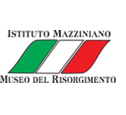The current exhibition layout includes a dozen rooms; there, the visitor can relive the history of Risorgimento, with its republican and democratic movements and its main protagonists, Giuseppe Mazzini and Giuseppe Garibaldi.
The narration begins with the revolt against the Austrians (1746) and the revival of the legend of Balilla, symbol of Genoese resistance; it continues with the sections devoted to Jacobin Republic (1797), annexation of Republic of Genoa to the French Empire (1805) and to the Sardinia’s Kingdom, which took place after the Vienna Congress (1815).
The section devoted to Giuseppe Mazzini is hosted in the apartment where Mazzini’s family lived; the room where the “Apostle” was born partially maintains the appearance of a “memorial”, as in the first set-up (1875), while the other two rooms are devoted to the young Giuseppe Mazzini, from his early experiences as member of the Carboneria to the Giovine Italia, with the reconstruction of his study room, including his guitar which he played during his long years of exile.
On the mezzanine floor, the most spectacular part of the Museum opens with the section dedicated to Goffredo Mameli and the first autograph draft of the Canto degli Italiani, better known as “Fratelli d’Italia”, the Italian national anthem, written by Mameli and composed by Michele Novaro, both Genoese by birth. This section is followed by display windows devoted to the Roman Republic (Repubblica Romana, 1849) and to the little known “revolt of Genoa” (1849).
The exhibition continues with a section dedicated to Giuseppe Garibaldi and the “Expedition of the Thousand”, with the legendary Red Shirts (Camicie Rosse) and the light blue uniforms of the Carabinieri Genovesi, association of volunteer shooters founded in Genoa, responsible for the major military successes during the Sicilian expedition.
From the room “5 May 1915, the Monument to the Thousand between legend and propaganda” there begins the last section of the museum, devoted to World War I (Grande Guerra), in particular to the subjects of propaganda, with documents, posters and postcards, drawings by soldier-artists, among which some of the most significant names of the contemporary Italian art scene.




